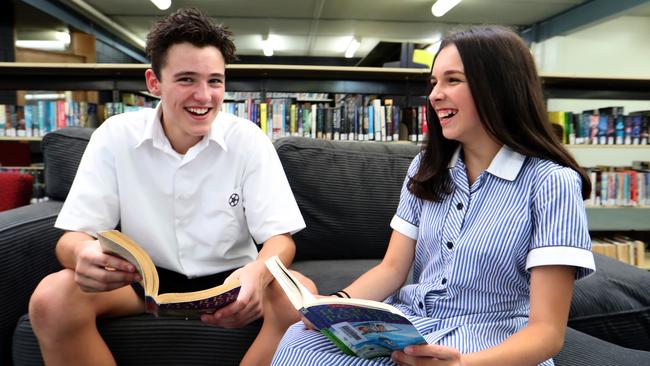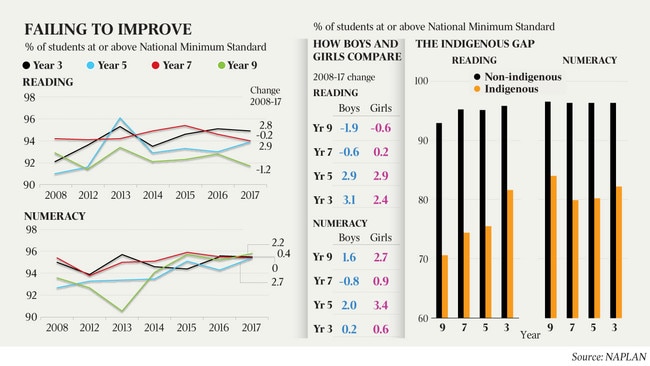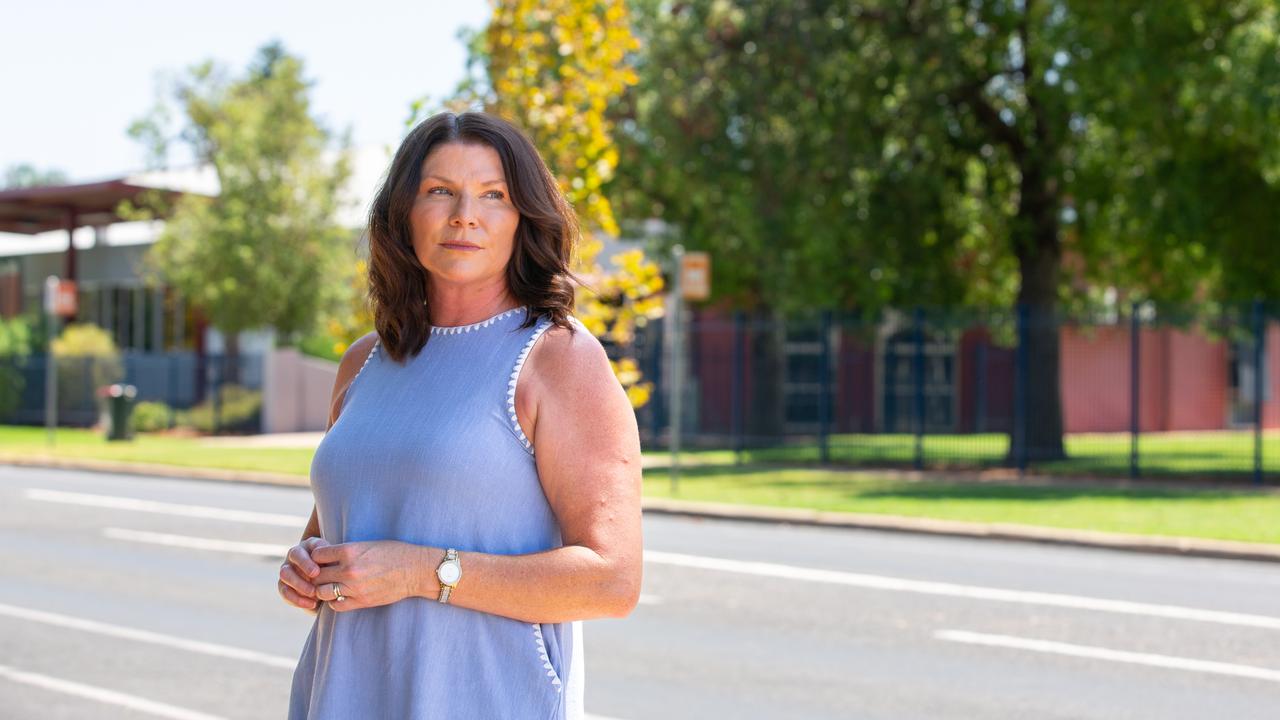High school reading stalls in NAPLAN ‘wake-up call’
Secondary students’ reading skills have failed to progress over the past decade, and have even gone backwards in several states.

Secondary students’ reading skills have failed to progress over the past decade, and have even gone backwards in several states, according to the latest snapshot of literacy and numeracy standards across the country.
The National Assessment Program — Literacy and Numeracy report, released today, also reveals that gains by indigenous students and those from non-English-speaking backgrounds have outpaced those of the broader student population across many age groups and several categories.
While the primary school levels have reported “statistically significant” reading improvements — evidenced by an 8 per cent jump in the national average Year 3 score since 2008 — Years 7 and 9 scores have flatlined, adding to concerns about the state of Australia’s education system and declining performance internationally.
While preliminary NAPLAN results released in August highlighted a general trend of improvement since the nationwide standardised test began 10 years ago, closer analysis across categories, year levels, locations and demographic subsets reveals some worrying developments. The number of Years 7 and 9 students nationwide reading at the minimum standard remains relatively unchanged. However, in Victoria, there has been a significant drop in Year 9 students meeting the benchmark — from 95 per cent in 2008 to 92 per cent this year.
A similar decline occurred in Tasmania, the ACT and South Australia, where a higher percentage of Year 9 students failed to meet the minimum reading standard than a decade ago. In Tasmania, 11 per cent of students fell short of the benchmark this year compared with 7 per cent in 2008.

In numeracy, girls have improved at a faster rate than boys. More girls now achieve at or above the minimum standard than boys in all years. Boys have gone backwards in Year 7.
Minister for Education and Training Simon Birmingham said the 2017 NAPLAN National Report confirmed that performance had continued to stagnate. “While there have been pockets of improvement, we’re not seeing the sort of consistency we should expect in these results,” he said. “We know how vital literacy skills are to setting students up for life beyond school, so the ... flatlining of reading results should act as a wake-up call that some changes are required.”
Centre for Independent Studies senior education researcher Jennifer Buckingham, who led a government-appointed panel that has recommended a nationwide literacy screening program, described the lack of improvement in Years 7 and 9 results as “disappointing but not unexpected”. “It will take at least three or four years for any gains in Year 3 to be seen in secondary school data, assuming that the gains are maintained.”
Australian Curriculum Assessment and Reporting Authority chief executive Robert Randall said: “The challenge is to find what individual schools are doing to improve performance for Year 7 and 9 students. We should learn from those successful schools and bring that knowledge through the system at a national level.”
Mr Randall said NAPLAN had shown “some improvement across all year levels in most domains”, singling out indigenous students, who had improved in Years 3 and 5 reading and spelling, Years 3 and 7 grammar and punctuation, and Years 5 and 9 numeracy.
Berwick Secondary College, in Melbourne’s southeast, operates a tailored program aimed at closing the gap between indigenous and non-indigenous students. Each of its 27 Koori students, while being connected to their culture, is assigned a mentor while student data is tracked to ensure they are making progress.
“There’s been a boost in attendance data and we’re looking forward to seeing the flow-on effect to NAPLAN results,” said deputy principal Alison Birkett.


